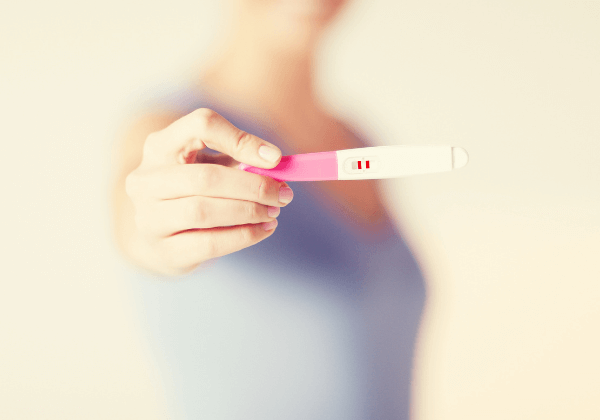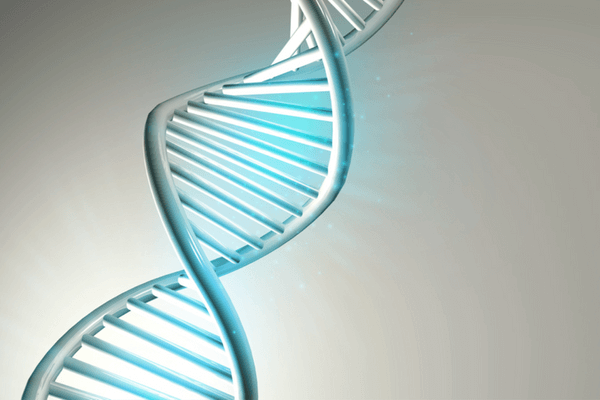Diagnostic Test for Female Infertility
Fertility Snapshot
A series of tests are done to give both men and women of all ages an assessment of their current reproductive potential. It allows us to determine how difficult it will be in future for a woman to conceive with her own eggs. Diagnostic tests are particularly recommended for women ages 35 and older, anyone with a history of infertility in their family, or anyone who is considering starting a family in the future and wants to know their individual biology or for women with recurrent pregnancy loss. In case of men, diagnostic tests often give a deep insight into male infertility issues. Based on the above tests, corrective procedures are planned, whether through medication or clinical or surgical intervention by the Fertility Specialists before even starting Fertility treatments such as IUI, IVF and ICSI. Diagnostic tests also give a good picture to enable making vital decisions such as Donor programs (Egg/Sperm/Embryo).
Diagnosis begins with the first visit, when the couple’s relevant medical history is reviewed and a physical exam completed. This prevents wasting precious time and money pursuing incomplete or ineffective treatment because of an initially incomplete data set.

Diagnosis for the female includes day two or three blood work, a transvaginal ultrasound within the first 7 days of the cycle, another blood draw on day 10, and a HSG (hysterosalpingogram). The blood work obtained provides a baseline of relevant prenatal labs, a thorough hormonal evaluation, and finally a thorough assessment of ovarian reserve (egg supply/quality). The HSG is an invaluable tool not only for assessing tubal patency and possible presence of tubal adhesions, but also for assessing whether or not the uterine cavity is normal.
Diagnosis for the male includes a semen analysis and possible additional immunological sperm testing or endocrine testing based on initial results.
The diagnostic procedures we perform include, but are not limited to:
Semen Analysis:
The semen analysis is a critical part of a couple’s initial evaluation. Obviously, the male partner is 50% of the fertility equation. Furthermore, male factor issues are just about as common as those affecting the female. Thus, it is important that a high quality analysis be performed, in a fertility center, where specially trained andrologists using specialized equipment are available.
A semen analysis will examine three main factors:

Sperm count

Sperm motility

Sperm morphology
We perform semen analysis with Micro-Cell counting chambers, using polarized light microscopy and reporting morphology (shape of the sperm, which is reflective of functionality) using the Kruger strict morphology standard, the optimum grading score, in our opinion. A MAR screening test for sperm antibodies is also included- important, but not done routinely at many centers
DNA Fragmentation Index (DFI)
For couples experiencing fertility problems, sperm testing is equally as important for the male, as hormone testing and other investigations are essential for the female, in helping to determine the underlying causes of a couple’s sub-optimal fertility.
Sperm DNA fragmentation testing can be performed at the same time as a semen analysis, but it is a separate and essential test that assesses the DNA quality of sperm.
It has little or nothing to do with the parameters that are measured on a routine semen analysis, such as the shape of the sperm or whether the sperm are moving – it is a completely independent variable. Men with otherwise normal semen analyses can have a high degree of DNA damage and men with what was called very poor sperm quality can have very little DNA damage. More importantly, the degree of DNA fragmentation correlates very highly with the inability of the sperm to initiate fertilisation and even if fertilisation occurs, high DNA fragmentation will often result in ceasing embryo development before implantation. Research also shows that even if a pregnancy is achieved, there is a significantly higher likelihood that it will result in miscarriage.
How DNA Fragmentation Test is Done
The patient’s fresh semen sample is collected at the Fertility Centre preferably. The most common way to test for sperm DNA fragmentation is by using Sperm Chromatin Structure Assay or SCSA with the collected sperm sample.
The SCSA is done by applying a stress (low pH) and then the sperm are labeled with a special dye that only attaches to the ends of broken DNA within the sperm cell. If the DNA is intact, then no dye will attach to the sperm. A machine called a ‘flow cytometer’ is used to test ten thousand sperm from the sample and the percentage of damaged sperm is tested, giving an index known as the DNA fragmentation Index (DFI).
A normal sample has less than 15% of the sperm with DNA damage, ideal is less than 10%. A DFI Between 16% and 29% is considered a fair fertility potential but becomes poorer as it approaches 27%. Men with extremely poor fertility potential have greater then 30% of their sperm damaged – which means that the likelihood of couples achieving a successful birth is around 1% if more than 30% of a male’s sperm are damaged.

The causes of high DNA fragmentation that cause male infertility include:

Chemical/toxin exposure

Varicocele (varicose veins of the testes)

Heat exposure

Testicular cancer

Smoking

Radiation

Infection

Others
Age
It is very important to understand that sperm DNA fragmentation can be improved if the underlying factors are addressed. The goal of complete sperm testing is to seek out the causes of poor sperm quality and try to correct them so conception can occur naturally or to improve the sperm quality for IVF and maximise the chances of success.
By testing for sperm DNA fragmentation, many cases of so-called “unexplained” infertility can now be explained. We find that many couples who have been previously unable to conceive with invasive and costly artificial reproductive technologies such as IVF, GIFT and ICSI achieve success once improvement in the male’s DNA fragmentation is improved.
AMH (Anti-Mullerian Hormone)
AMH testing helps determine fertility potential and ovarian reserve. AMH is secreted by the “resting follicles” between ~2-9 mm and is a numerical measure of ovarian activity.
Transvaginal Ultrasound
Transvaginal Ultrasound is a technique which enables the Sonologist to visualize your ovaries and uterus using sound waves. The ultrasound probe is placed in the vagina. It gives off an intermittent, high-pitched sound out of the normal hearing range, which is reflected off the pelvic organs. These echoes are recorded, and a picture is created on a TV screen/monitor. The procedure is usually painless. 3D/4D technology is now available at PSFC!
Transvaginal Ultrasound is used for assessment of ovarian reserve, as well as screening for abnormalities such as polyps, fibroids, ovarian cysts, including endometriomas and the presence of scar tissue. It is also used to monitor the growth of follicles in the ovary throughout the cycle, and to confirm ovulation. Finally, it is invaluable in verification of success, meaning a viable intrauterine pregnancy.
Post-Coital Test (PCT)
A sample of mucus is removed from the cervix at the time of ovulation. The couple will have had intercourse on the preceding evening, that morning, or both. The gross characteristics of the mucus are noted. It is then examined microscopically, observing the quality of the mucus and the number of sperm and their motility in the mucus. The test determines whether adequate mucus is being produced at the time of ovulation and whether sperm are entering and surviving in the mucus.
Laparoscopy
This is an outpatient surgical technique used for diagnostic purposes and for the treatment of certain diseases or conditions. Performed under general anesthesia, laparoscopy involves making a small incision, usually through the navel, to minimize scarring. The abdominal cavity is then observed through the laparoscope, a long tube with a light and lens system for viewing the intra-abdominal organs. Conditions such as tubal disease, adhesions (scar tissue), endometriosis, or the location of cysts or tumors can be accurately diagnosed. If an abnormality or disease is found, specialized instruments or lasers may be employed to correct the problem at the time of diagnosis. Additional small incisions in the lower abdomen may make it possible to remove adhesions, cysts or endometriosis, or even open obstructed Fallopian tubes. A diagnostic laparoscopy examination typically takes less than one hour and causes only mild discomfort for a day or two. Operative laparoscopy can take two or more hours, but still only causes mild discomfort for a day or two.
Hysterosalpingogram (HSG)
The HSG is one of the primary tests used to reveal tubal or uterine problems contributing to infertility. The advantages include superior imaging techniques and convenience when performed at the Fertility Centre. The procedure has two steps. First, a dye is injected into the uterine cavity. Then a series of x-ray pictures are taken. As the dye moves through the organs, the physician can assess the condition of the cervical canal, uterus and fallopian tubes.
Sonohysterogram (SHG)
This is a procedure which evaluates the uterine cavity for polyps, fibroids or scar tissue. A catheter is placed into the uterus and sterile saline is injected while transvaginal ultrasound visualizes the cavity.
Endometrial Biopsy
A small sample of the lining of the uterus is removed a day or two before menses is expected. The specimen is obtained by passing a plastic tube through the cervix into the uterine cavity. Suction is applied and the tube is removed. The resulting small piece of tissue is then examined microscopically in the pathology lab. The procedure may cause cramping. This procedure is used to diagnose abnormal cellular changes of the uterine lining which may be associated with abnormal bleeding. It was previously used to look at the development or maturation of the lining in patients with infertility or recurrent pregnancy loss but has mostly been replaced with a carefully timed serum progesterone.
Immunobead test
A confirmation test for a positive MAR screening test, it detects the presence or absence of antibodies on the sperm surface, particularly useful in case of a vasectomy reversal or with a history of testicular injury or infection.
Hysteroscopy
Hysteroscopy is an outpatient procedure. But unlike laparoscopy, it does not require an abdominal incision. The cervix is dilated and the uterine cavity is distended with fluid. The hysteroscope, basically a long tube with a light and lens system and a channel for placing instruments, is passed through the cervix and permits the examination of the inside of the cervix and uterus. It is particularly useful in the diagnosis of adhesions (scar tissue) within the uterus as well as fibroid tumors or polyps. These conditions will generally be treated at the time of the initial hysteroscopy.
Tests of Reproductive Organs
Before you can get pregnant, your uterus, fallopian tubes and ovaries all need to work right. Your doctor may suggest different procedures that can check the health of these organs.
Depending on the individual couple’s situation, various blood tests on either the female or the male may be needed. Blood tests that might be needed include Day 3 Follicle Stimulating Hormone (FSH), Luteinizing Hormone (LH), Estradiol (E2) AMH, Prolactin, Testosterone (T), Progesterone (P4), 17-hydroxyprogesterone (17-OHP), thyroxin (T4), Thyroid Stimulating Hormone (TSH).
If there is a history of recurrent miscarriages (2 or more) a lupus anticoagulant (LAC) and anti-cardiolipin antibody (ACL) are often done, as well as other tests.
AMH (Anti-Mullerian Hormone) testing helps determine fertility potential and ovarian reserve. AMH levels can give an idea of how well the ovaries function. This is called their ovarian reserve. Very low levels can suggest low ovarian reserve. You may get a blood test to check your levels of follicle-stimulating hormone, or FSH, which triggers your ovaries to prepare an egg for release each month. High FSH can mean lower fertility in women. The FSH blood levels get checked early in your menstrual cycle (often on day 3).
Hysterosalpingogram (HSG): The HSG is one of the primary tests used to reveal tubal or uterine problems contributing to infertility. Also called a “tubogram,” this is a series of X-rays of your fallopian tubes and uterus. The X-rays are taken after your doctor injects liquid dye through the vagina. As the dye moves through the organs, the physician can assess the condition of the cervical canal, uterus and fallopian tubes.
Another method uses saline and air instead of dye and an ultrasound. The HSG can help you learn if your fallopian tubes are blocked or if you have any defects of your uterus. The test is usually done just after your menstrual period.
Sonohysterogram (SHG) This is a procedure which evaluates the uterine cavity for polyps, fibroids or scar tissue. A catheter is placed into the uterus and sterile saline is injected while transvaginal ultrasound visualizes the cavity.
After the testing is done, about 85% of couples will have some idea about why they’re having trouble getting pregnant.
Preimplantation genetic diagnosis (PGD) or Embryo Biopsy
Preimplantation genetic diagnosis (PGD) is a very important diagnostic technique that allows us to detect genetic abnormalities in the embryo before its transfer to the mother’s uterus. To do so, an embryo cell needs to be collected to subsequently examine its genetic material.
Each cell in your body contains chromosomes, which contain your genetic material in genes. Within each cell there are thousands of genes. We inherit 23 pairs of chromosomes from our parents and genetic disease is caused by an abnormality of a gene or entire chromosome. These abnormalities include:
- The absence of a gene
- Too many genes or a partially developed gene
- Missing chromosomes or extra chromosomes
The human body prefers the exact number of genes, completely intact. If this is not the case, genetic abnormalities occur, which can lead to miscarriage or the birth of a child with a congenital disease or defect.
Depending on the indication, the following genetic tests can be performed:
Aneuploidy test (PGT-A)
This test consists of examining the number of chromosomes in the embryo by applying NGS.
The transfer of embryos with genetic abnormalities may decrease the pregnancy rate and increase the percentage of miscarriages. Identifying these embryos improves the success rates in an assisted reproduction programme. Preimplantation genetic diagnosis (PGD) is recommended in those cases in which there is a chromosomal risk for the embryo, such as:
- Couples with recurrent miscarriages
- Women of advanced reproductive age
- Implantation failures
- Genetic male factor
Recent advancements in the field have shown that the use of PGT-A during IVF leads to an increase in implantation rates, which, in turn, result in higher pregnancy rates. It has also been shown to reduce the incidence of miscarriage by identifying chromosomally abnormal embryos that otherwise would have previously been transferred. Due to the mounting research in favor of routine genetic screening we have made PGT-A an integral part of all our IVF procedures.
Endometrial Biopsy
(Endome TRIO – ERA, EMMA, ALICE)
EndomeTRIO is a series of tests including ERA and two additional tests: ALICE and EMMA.
ALICE: Analysis of Infectious Chronic Endometriosis
ALICE detects chronic endometritis-causing bacteria and recommends appropriate antibiotics. Endometriosis is a condition affecting 30% of infertile patients that is linked to implantation failure and recurrent miscarriages.
EMMA: Endometrial Microbiome Metagenomic Analysis
EMMA indicates the endometrial microbiome balance. EMMA provides information on the proportions of healthy endometrial bacteria, including those linked to higher pregnancy rates. It will recommend antibiotic and probiotic treatment, if needed, to restore an optimal microbiome. Includes ALICE.
Endometrial Image Assessment
This innovation is non-invasive and uses ultrasound technology to assess the receptivity of your endometrial lining to embryo transfer in order to increase the probability of successful implantation.
In cases where receptivity is high, we can be more confident in proceeding with transferring the embryo. In cases where we assess receptivity to be low, the best decision may be to cryopreserve the embryo for transfer in a future cycle.
Laparoscopy & Hysteroscopy
Laparoscopy is useful to evaluate the pelvic cavity for endometriosis, pelvic adhesions, and other abnormalities.
Hysteroscopy can help diagnose and treat abnormalities inside the uterine cavity such as polyps, fibroids, and adhesions (scar tissue).
Monogenic diseases (PGT-M)
Another type of abnormality are those that are caused by a single gene mutation. These abnormalities are not identifiable with karyotype and the specific DNA structure needs to be examined in order to identify them.
Transmission of certain genetic diseases through the parents can be avoided by applying Preimplantation genetic diagnosis (PGD) on the embryos collected during an assisted reproduction cycle. A few of these diseases are cystic fibrosis, beta thalassaemia or some muscle dystrophies.
PGT-M can be used by both fertile and infertile couples. Couples who are carriers of a familial single gene disorder may wish to access PGT-M to have children without the particular genetic disorder.
Structural chromosome abnormalities
Occasionally we find healthy patients with abnormalities on their karyotype who only have problems when trying to achieve a pregnancy. Those patients who are carriers of balanced or Robertsonian translocations, as well as inversions, may generate abnormal embryos. In these cases, the Preimplantation Genetic Diagnosis (PGD) technique is recommended to identify the altered embryos and avoid their transfer.
ERA (Endometrial Receptivity Analysis)
ERA is an innovative test that helps pinpoint the exact time when your endometrium is receptive to embryo implanting. This test can help improve chances of pregnancy for those with repeated failed IVF.
ERA involves taking a small sample (biopsy) of endometrial cells at a particular time in your cycle. Cells in the endometrium produce certain types of genetic material during the window of implantation (WOI). An ERA can identify which endometrial cells are “Receptive” or “Nonreceptive” and whether your WOI is open or not. With repeated tests your doctor can determine your precise WOI. We can then time your embryo transfer to the most optimal time to maximize chance of achieving pregnancy.
An endometrium is receptive when it is ready for the embryo implantation. This occurs around days 19-21 in each menstrual cycle of a fertile woman. This period of receptivity is what we call the window of implantation.
The lack of synchronisation between the embryo ready to be implanted and endometrial receptivity is one of the causes of recurring implantation failure. This is why it is imperative to assess the endometrium in order to determine the optimal day for embryo transfer.
The ERA test requires an endometrial biopsy that should be carried out on day LH+7 (natural cycle) or day P+5 (HRT cycle). This biopsy is quickly and easily taken by a gynaecologist in their consultation room. After being sent away, the sequencing expression of 236 genes involved in the endometrial receptivity is analysed. An in-house designed computational predictor analyses the data obtained, classifying the endometrium as Receptive or Non-Receptive.
This test has been performed on patients who have had recurring implantation failure with embryos of good morphological quality. This test is recommended for patients with seemingly normal uterus and normal endometrial thickness (≥6 mm), in which no problems are detected.A displaced window of implantation is detected in approximately 25% of these patients.This analysis helps determine the personalised window of implantation, enabling personalized embryo transfer (pET) to be performed on the basis of these results.

